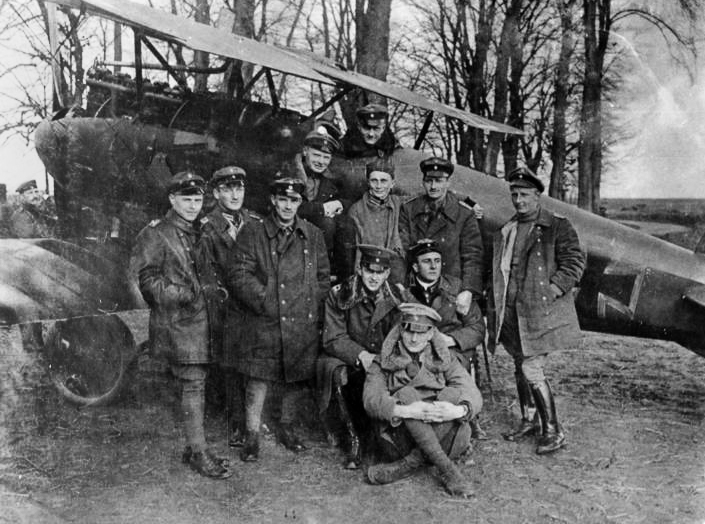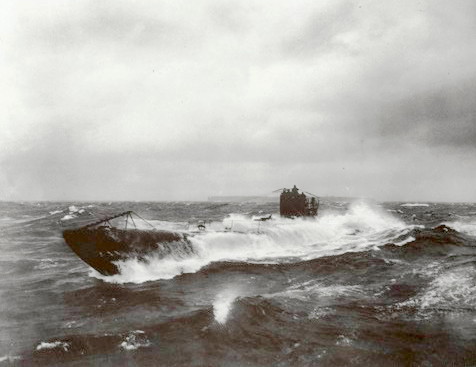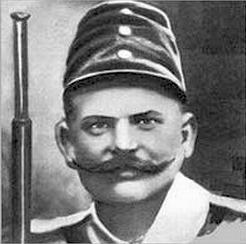The Lost Treasure of the Tsars
Tsar Nicholas II was Russia’s last emperor who was forced to abdicate in March 1917. Facing civil unrest and the threat of a German invasion in WWI, he hid 1,600 tons of gold – about 73% of Russia’s entire gold reserves worth approximately $60 billion. When Nicholas and his family were executed in 1918, the gold’s whereabouts became a mystery.
Not anymore. Russian mini-subs found some of it about 1,200 feet below the waters off Cape Tolstoy in Lake Baikal, Siberia in September 2010. The rest was discovered in a sealed-off railway tunnel at Irkutsk near the lake in April 2017.
Who Killed the Red Baron?
Manfred Albrecht Freiherr von Richthofen was an ace pilot and Germany’s national hero. Even the Allies respected him, calling von Richthofen the “Red Baron.” Having clocked up 80 kills, he was chasing his next victim – Canadian pilot Lieutenant Wilfrid May on April 21, 1918.
They were flying over Morlancourt Ridge near France’s Somme River when a .303 bullet hit the German in the heart and lungs at a little past 11 AM. Despite being hit, he managed a rough landing before dying. The Australian No.3 Squadron took credit for the kill, but no one really knows for sure.

What Happened to the Crew of the Zebrina?
The Zebrina was a flat-bottomed, schooner-rigged, three-masted sailing barge built in 1873 for river transport. She was turned into a cargo vessel shipping coal from England to France, and in October 1917 she did so for the last time.
Setting off from Falmouth with a load of Swansea coal, Captain Martin sailed to Saint-Brieuc, France. It should have taken 30 hours. Instead, she was found two days later aground at Rozel Point, near Cherbourg, France. Her captain and crew of six men were missing. She had not been damaged or boarded, and her coal was still on board.
Who Killed Private John Parr?
John Henry Parr, born on July 19, 1897, in England, got tired of being poor and hungry. In 1912, the 15-year-old lied about his age and joined the 4th Battalion of the Middlesex Regiment where he became famous – for being the first British soldier to die in WWI.
It happened on August 21, 1914, in the Belgian village of Obourg, northeast of Mons. Officially, he died from German fire, but records show the Germans had not yet reached the area. While some pin the mystery of his death to the chaos of war, others believe friendly-fire may have killed him.
Did a Sea Monster attack a German Submarine?
On April 30, 1918, British patrol boat, HMS Coreopsis, found a German submarine (UB-85) off the coast of Stranraer in Scotland. To their surprise, the Germans were desperate to surrender, so the British took on the crew and sank the sub.
According to the U-boat’s commander, they had surfaced to recharge their batteries when something attacked them. It had large eyes, a horny skull, and huge teeth that glistened in the moonlight. It only retreated when they shot it with everything they had, but it was so strong that it damaged their forward deck plating – leaving them unable to submerge.

The Mystery of the 1919 Kinmel Park Mutiny
On March 4 and 5, 1919 five Canadian soldiers died, and 23 were severely wounded. It happened in North Wales at Kinmel Park – a Canadian military camp that held about 15,000 soldiers.
There were two days of rioting at the camp due to dissatisfaction over delays in repatriating the Canadians following WWI. Strikes had slowed down fuelling for their transport ships, and the men lacked food and fuel and had not been paid for over a month. In the aftermath, 78 were arrested, and 25 were convicted of mutiny – not murder.
What Happened to Béla Kiss?
Béla Kiss was a Hungarian tinsmith who lived in the town of Cinkota, near Budapest. As a sideline, he did astrology and magic, but it did not pay well. When Hungary joined WWI, he was conscripted and went off to war in 1914.
In July 1916, his landlord made a terrible discovery. It seems that Kiss looked for love in classified ads to lure 23 women and one man to his home. He then strangled and robbed them, drained them of blood, pickled them in alcohol, then stuffed them in metal drums. He was never caught.

Who Was the Mysterious “JM?”
The University of Victoria in British Columbia, Canada received a treasure in the 1960s… even though it took them a while to realize it. It was a two-volume leather diary dedicated to a daughter named “Adèle.” What it lacked in words, however, it more than made up for with 130 watercolors of WWI.
They were drawn on stationery bearing the coat of arms of The Royal Artillery; whoever did them fought in France and Belgium from 1917 to 1918. Other than the initials “JM,” nothing else is known about the artist, so the university is asking the public for help in identifying the artist.
The Angels of Mons
The British Expeditionary Force’s (BEF) first major engagement against the Germans took place at the Battle of Mons on August 22, 1914. It was hopeless. The Germans overwhelmed them, forcing the BEF to retreat. To buy them time, a host of angels drove the Germans back.
Or did they? Some believe that it was simply the result of mass hysteria as the desperate British needed a miracle. Arthur Machen, a journalist who covered the war, claimed he had made up the story as a piece of fiction – but few believed him. So the mystery remains.
What Happened to the USS Cyclops?
The USS Cyclops was a Proteus-class colliers ship that went into service in 1910. She helped evacuate refugees during the American occupation of Veracruz, Mexico (1914-1915) and helped protect convoys in France during WWI. On March 3, 1918, she docked at Barbados and set off the next day for Baltimore.
She never showed up. Cyclops had a crew of 306 and was loaded with 10,000 long tons of manganese ore. Suspicion fell on German submarines, but as of 2017, the wreck has never been found – making it the biggest, single loss of life in US Naval history. It occurred in the Bermuda Triangle.
